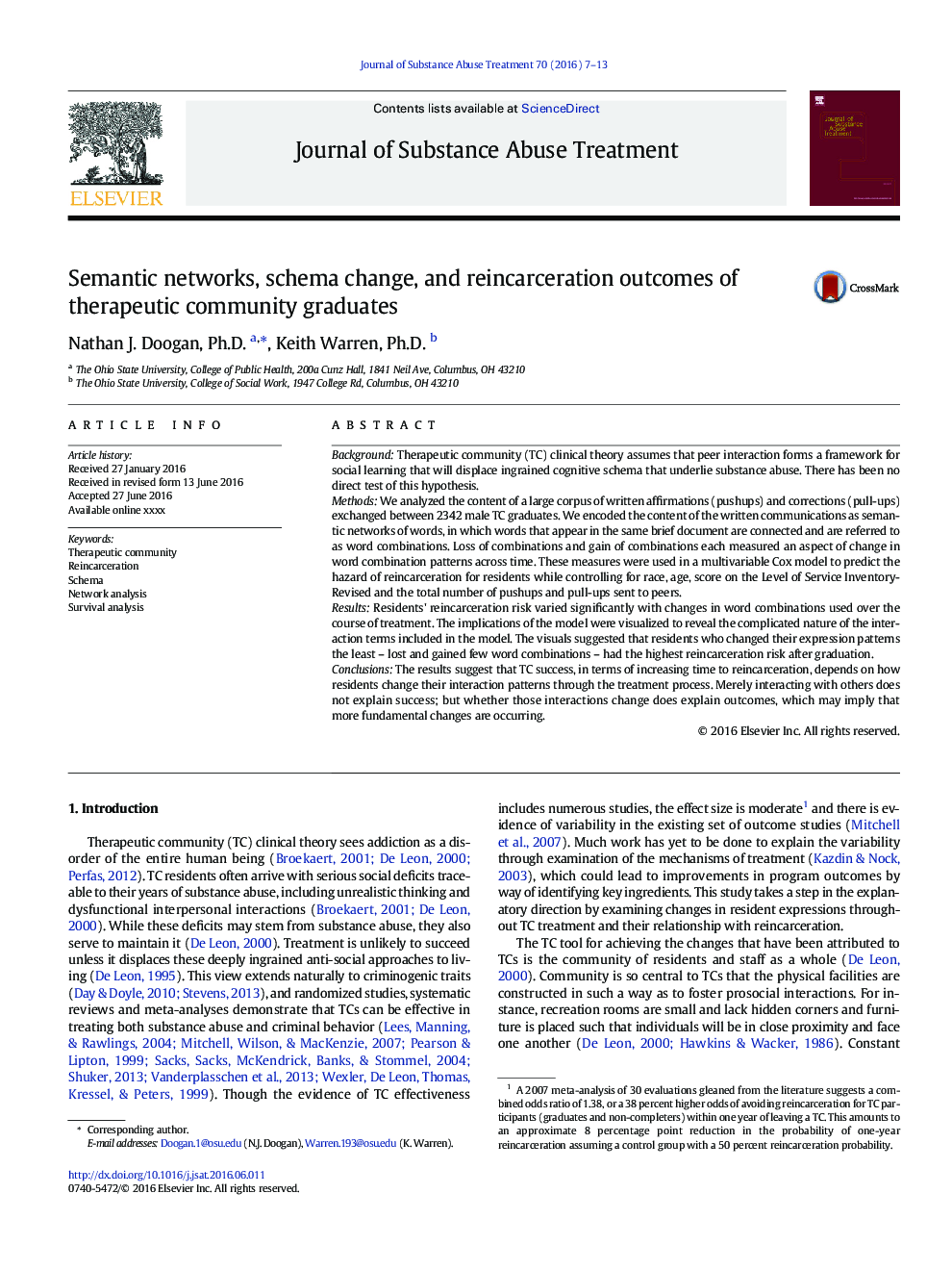| Article ID | Journal | Published Year | Pages | File Type |
|---|---|---|---|---|
| 494428 | Journal of Substance Abuse Treatment | 2016 | 7 Pages |
•Link constructs of schema to a network characterization of textual data.•Schema change is measured and used in a survival model of reincarceration.•Changes in resident schemas during treatment explain the risk of reincarceration.•Subtler examination of schema change that builds on this work is warranted.
BackgroundTherapeutic community (TC) clinical theory assumes that peer interaction forms a framework for social learning that will displace ingrained cognitive schema that underlie substance abuse. There has been no direct test of this hypothesis.MethodsWe analyzed the content of a large corpus of written affirmations (pushups) and corrections (pull-ups) exchanged between 2342 male TC graduates. We encoded the content of the written communications as semantic networks of words, in which words that appear in the same brief document are connected and are referred to as word combinations. Loss of combinations and gain of combinations each measured an aspect of change in word combination patterns across time. These measures were used in a multivariable Cox model to predict the hazard of reincarceration for residents while controlling for race, age, score on the Level of Service Inventory-Revised and the total number of pushups and pull-ups sent to peers.ResultsResidents' reincarceration risk varied significantly with changes in word combinations used over the course of treatment. The implications of the model were visualized to reveal the complicated nature of the interaction terms included in the model. The visuals suggested that residents who changed their expression patterns the least – lost and gained few word combinations – had the highest reincarceration risk after graduation.ConclusionsThe results suggest that TC success, in terms of increasing time to reincarceration, depends on how residents change their interaction patterns through the treatment process. Merely interacting with others does not explain success; but whether those interactions change does explain outcomes, which may imply that more fundamental changes are occurring.
